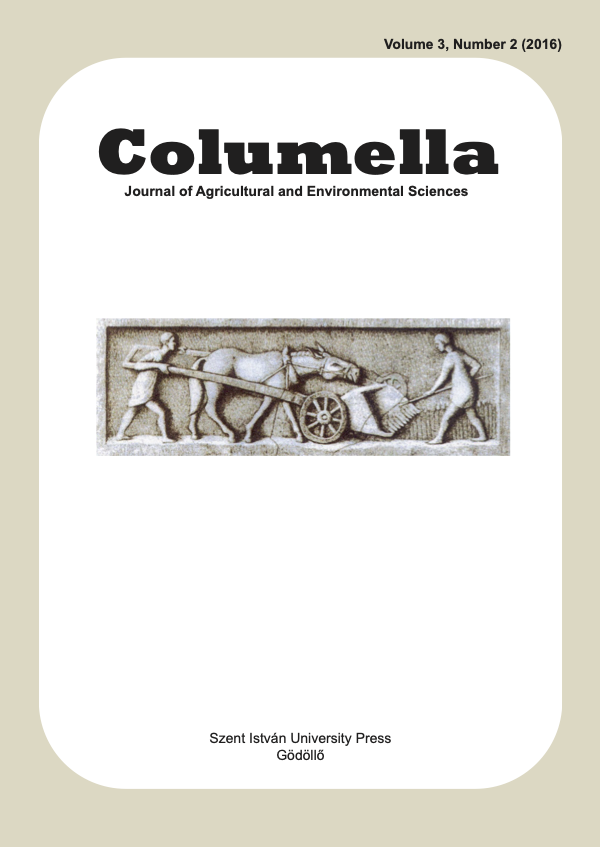Effect of coloured shade nets on some nutritional characteristics of a kapia type pepper grown in plastic tunnel
DOI:
https://doi.org/10.18380/SZIE.COLUM.2016.3.2.25Keywords:
Capsicum annuum, carotenoids, vitamin C, polyphenols, harvest timeAbstract
Sweet pepper is the most important vegetable crop of the Hungarian greenhouse industry. Production of red coloured cultivars, having very high nutritive value, is getting popular recently. Shading of plastic tunnels is a common practice in Hungary, but research about its effects on the nutritional characteristics of sweet pepper has just started. The objective of this study was to investigate the effect of different shading methods (shading paint, white, green, yellow and red coloured shade nets) on some nutritional characteristics of a red coloured kapia type pepper, under Hungarian climatic conditions cultivated in unheated walk-in plastic tunnels. Shade net colour slightly affected radiation and hence temperature conditions of the tunnels; especially ratio of supra-optimal temperature values (32 °C <) was changed. Dry matter content was not influenced by shading method, in contrary to sampling time which had a significant effect on this parameter. Vitamin C and total polyphenol contents were affected by both of these factors and also by their interaction; shading effect on these phytonutrients changed with harvest times. However, total carotenoid content was affected just by this latter factor. Heat stress, higher ratio of supra-optimal temperature values, increased total polyphenol concentration and decreased total carotenoid content. In overall, white shade net resulted sweet peppers with the best nutritive quality, but harvest time had a more pronounced effect on content of nutritive constituents than shade net colour.
Downloads
Published
Issue
Section
License
Copyright (c) 2016 Attila Ombódi, Zoltán Pék, Péter Szuvandzsiev, Andrea Lugasi, Hajnalka Ledóné Darázsi, Lajos Helyes

This work is licensed under a Creative Commons Attribution-NonCommercial-NoDerivatives 4.0 International License.






